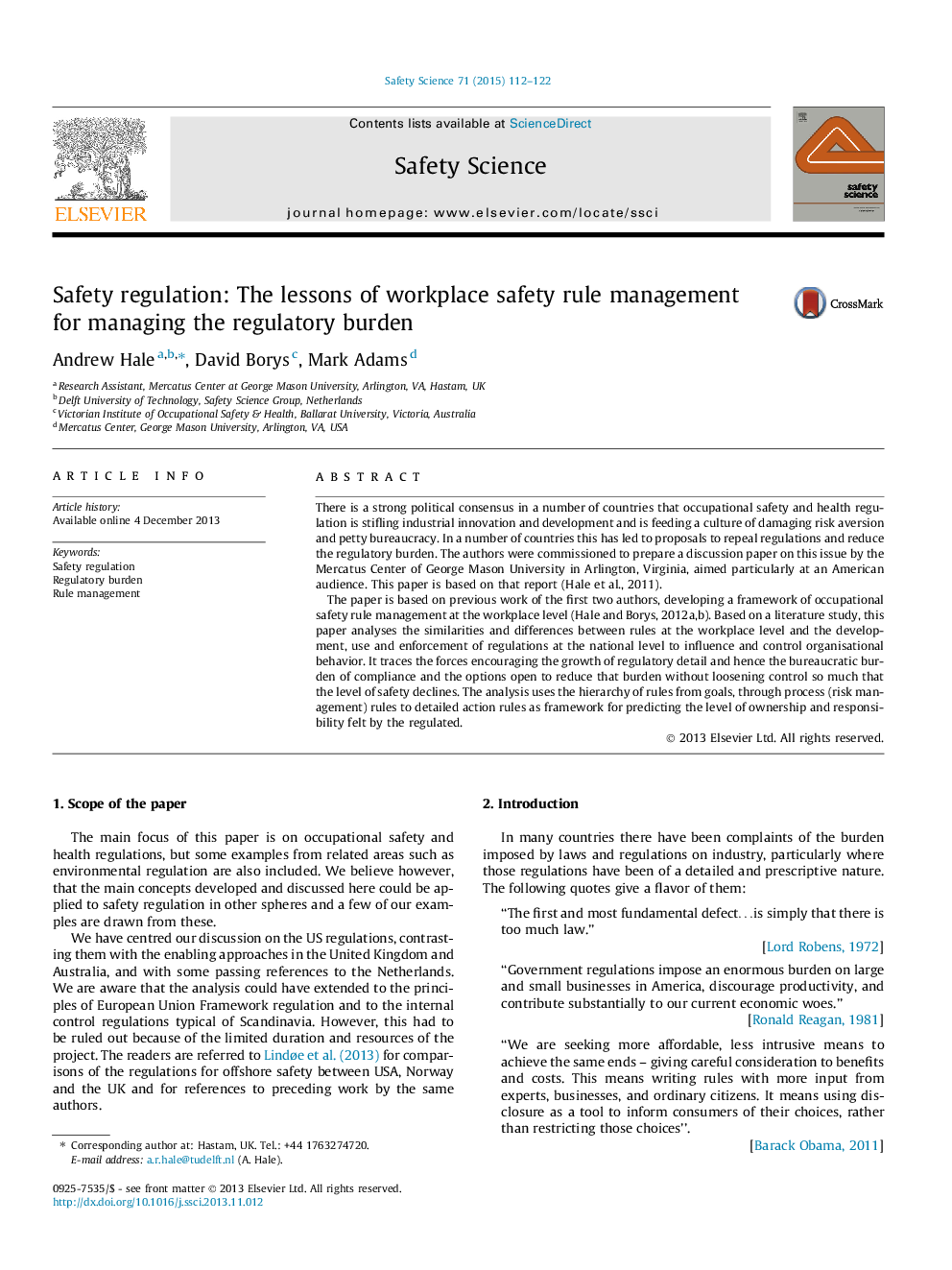| Article ID | Journal | Published Year | Pages | File Type |
|---|---|---|---|---|
| 589016 | Safety Science | 2015 | 11 Pages |
•An analysis of the concept of regulatory burden in the USA.•A typology of rules and regulations.•A framework for evaluating safety regulations.
There is a strong political consensus in a number of countries that occupational safety and health regulation is stifling industrial innovation and development and is feeding a culture of damaging risk aversion and petty bureaucracy. In a number of countries this has led to proposals to repeal regulations and reduce the regulatory burden. The authors were commissioned to prepare a discussion paper on this issue by the Mercatus Center of George Mason University in Arlington, Virginia, aimed particularly at an American audience. This paper is based on that report (Hale et al., 2011).The paper is based on previous work of the first two authors, developing a framework of occupational safety rule management at the workplace level (Hale and Borys, 2012a,b). Based on a literature study, this paper analyses the similarities and differences between rules at the workplace level and the development, use and enforcement of regulations at the national level to influence and control organisational behavior. It traces the forces encouraging the growth of regulatory detail and hence the bureaucratic burden of compliance and the options open to reduce that burden without loosening control so much that the level of safety declines. The analysis uses the hierarchy of rules from goals, through process (risk management) rules to detailed action rules as framework for predicting the level of ownership and responsibility felt by the regulated.
